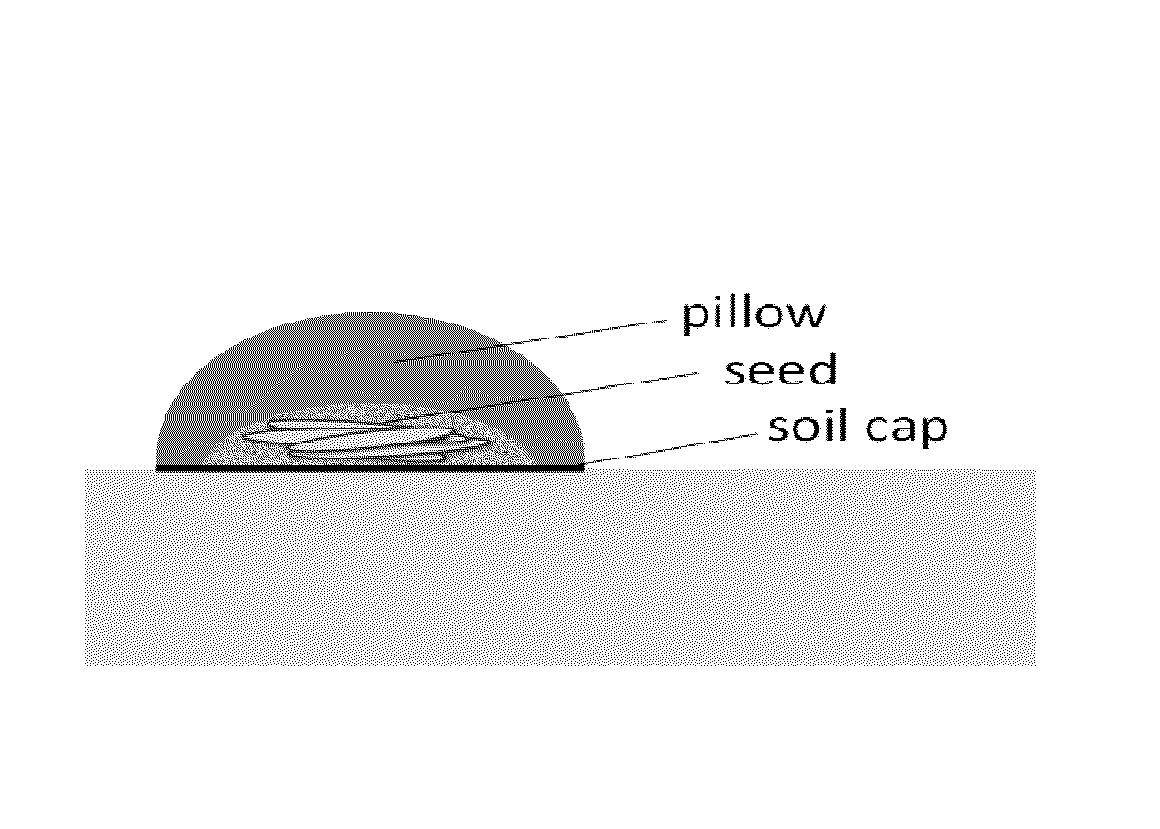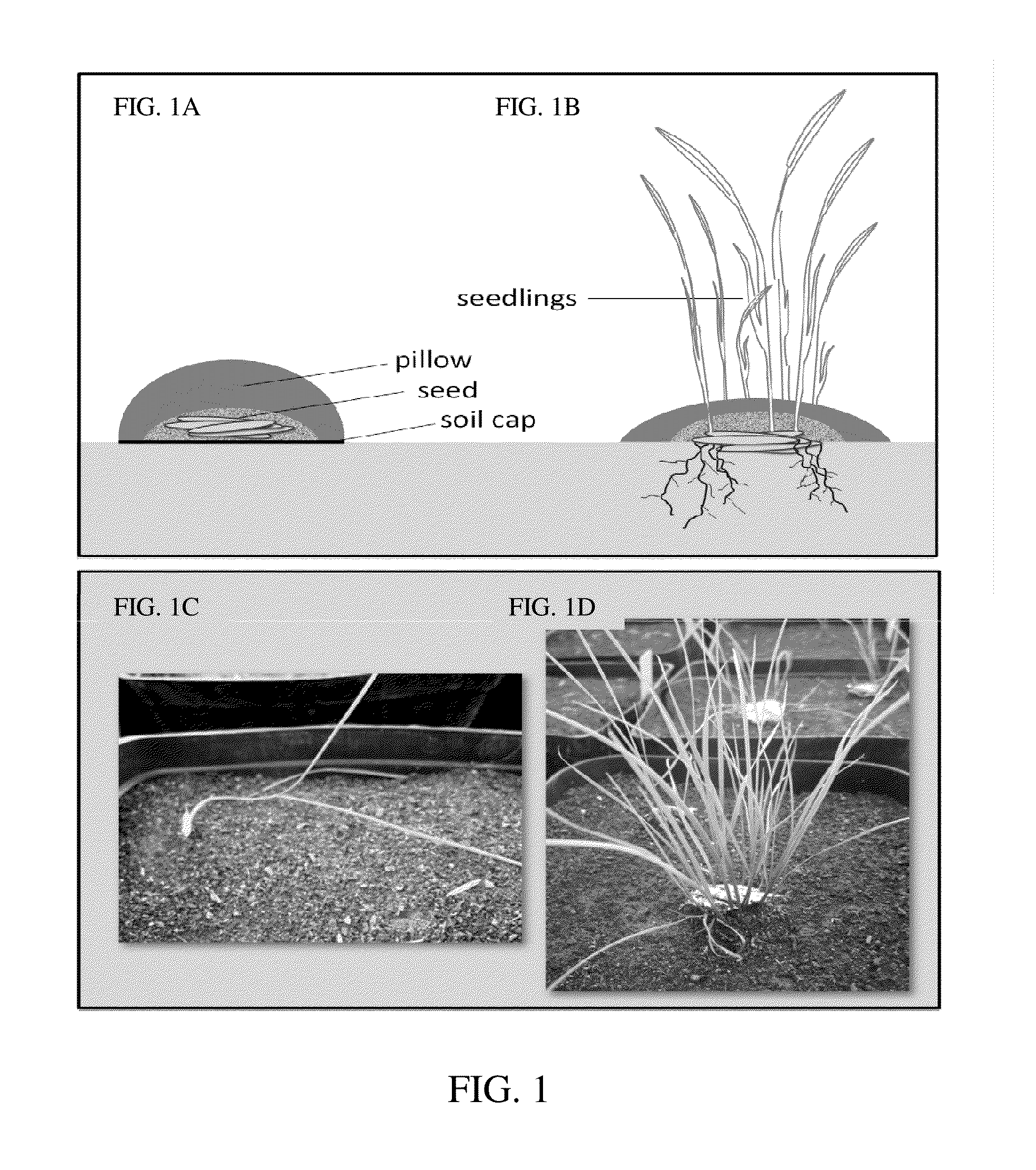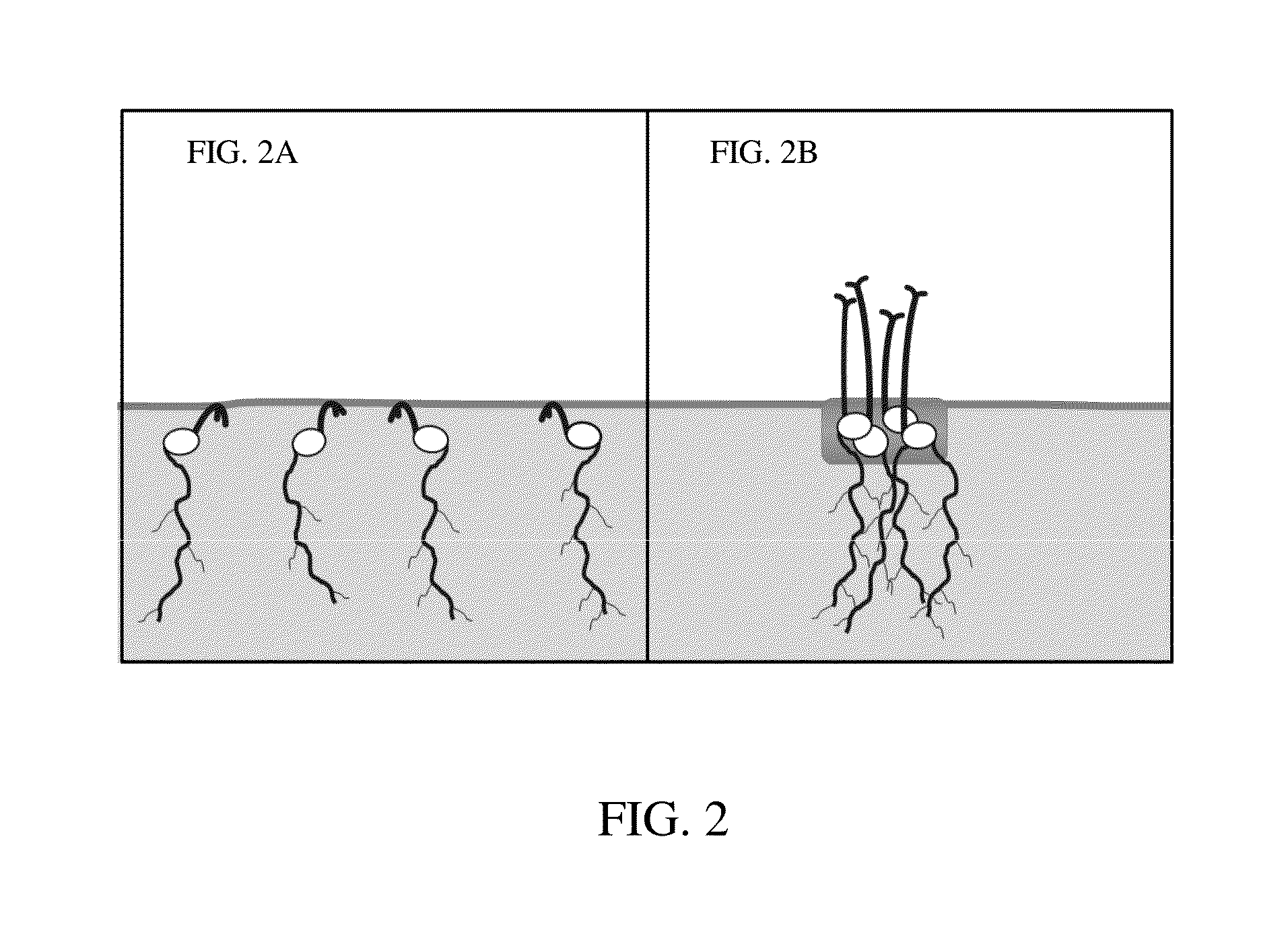Seed pillow for overcoming the limiting factors controlling rangeland reseeding success
a seed pillow and limiting factor technology, applied in the field of compositions and methods to improve seeding success, can solve the problems of few effective seeding technologies, less than optimal conditions, and failure to address the primary sources of mortality of seeding technologies used, and achieve the effect of facilitating seedling establishmen
- Summary
- Abstract
- Description
- Claims
- Application Information
AI Technical Summary
Benefits of technology
Problems solved by technology
Method used
Image
Examples
example 1
[0082]The following example illustrates the ability of seed pillows as disclosed herein to improve seedling density by comparison to untreated seeds, from a broadcast seeding of a native bunchgrass.
[0083]This example compares seedling densities produced from 1) non-treated seeds, 2) seeds incorporated into a two layer extruded seed pillow, and 3) seeds incorporated into a two layer extruded seed pillow with horse manure as fertilizer. Model species used in the evaluation was bluebunch wheatgrass (Pseudoroegneria spicata (Pursh) A. Löve). The seed core layer was comprised of a dough mixture containing by weight 5.4% seed, 73.1% fine-sand and 21.5% Selvol® 205 binder, which is a partially hydrolyzed, polyvinyl alcohol (PVOH) binder (Sekisui Specialty Chemicals America, LLC, Houston, Tex.), and was prepared according to Sekisui solution preparation guidelines with 5% solid content (Sekisui Specialty Chemicals, 2009). Cover layer dough without manure contained a mixture by weight of 32....
example 2
[0090]The following example illustrates the ability of seed pillows to increase seedling density and biomass production by comparison to untreated seed, from a broadcast seeding of a native bunchgrass.
[0091]In the greenhouse seedling emergence and plant growth was compared between seeds attached to the bottom of pillows and non-treated seeds (control). Model species included bluebunch wheatgrass and crested wheatgrass (Agropyron cristatum (L.) Gaertn).
[0092]Prior to attaching seeds to the pillow, they were treated in a RP14DB rotostat seed coater (BraceWorks Automation and Electric, Lloydminster, SK) with the fungicides Thiram® and Allegiance® (Bayer Crop Science, North Carolina) at 0.5% weight of product to weight of seed (w / w) and 0.047% w / w, respectively. To improve seed coverage, the fungicide mixture was diluted with 6.6% w / w water, and 1.3% w / w Sepirent® colorant (Becker Underwood, Ames, Iowa). Seed pillows contained a wet dough mixture by weight of 28% diatomaceous earth, 49%...
example 3
[0095]The following example illustrates the ability of seed pillows to improve seedling emergence of a drill seeded shrub species.
[0096]The objective of this study was to 1) compare seedling emergence from non-treated seed and seed incorporated into pillows designed for drill seeding, and 2) evaluate different additives for incorporating into the pillow for increasing seedling emergence velocity and plant density. To achieve the objectives, nine treatments were implemented. The first two treatments included a non-treated seed (control) and seeds incorporated into a pillow that only contained the basic structural components (blank). We also compared seeds incorporated into a pillow that contained: 1) Seaweed extract (Acadian Seaplants Limited, Dartmouth, Nova Scotia, CAND), 2) Ascend® plant growth regulator (Winfield Solutions, LLC, St Paul, Minn., USA), 3) NutriSeed ZMC® (Agrichem, Loganholme, AUS.), 4) Zeba® super absorbent seed coating powder (Absorbent Technologies, Beaverton, Or...
PUM
 Login to View More
Login to View More Abstract
Description
Claims
Application Information
 Login to View More
Login to View More - R&D
- Intellectual Property
- Life Sciences
- Materials
- Tech Scout
- Unparalleled Data Quality
- Higher Quality Content
- 60% Fewer Hallucinations
Browse by: Latest US Patents, China's latest patents, Technical Efficacy Thesaurus, Application Domain, Technology Topic, Popular Technical Reports.
© 2025 PatSnap. All rights reserved.Legal|Privacy policy|Modern Slavery Act Transparency Statement|Sitemap|About US| Contact US: help@patsnap.com



